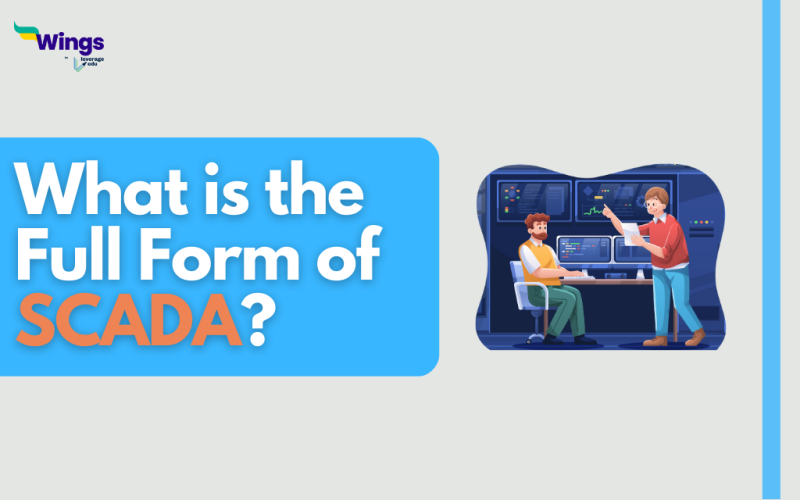The full form of SCADA is Supervisory Control and Data Acquisition, a computer system that gathers and covers real-time data. SCADA systems are deployed in a wide range of industries to track production processes and equipment. These computerised systems were first deployed in the 1960s. These are used by production companies to regulate the industry in remote places and globally. A SCADA system is based on a human-machine interface (HMI) to communicate with different parts of machinery such as pumps, valves, motors, sensors, etc.
How Does SCADA Operate?
A SCADA system is an amalgamation of two electronic devices- programmable logic controllers (PLCs) and remote terminal units (RTUs). These devices communicate with multiple objects like industrial machinery, end devices, sensors, and HMIs. RTUs and PLCs transport data from the aforementioned objects to computer systems using Supervisory Control and Data Acquisition software. The software then analyses, transports, interprets and displays data to related operators and helps in the decision-making.
Features of SCADA system
Some of the critical features of a Supervisory Control and Data Acquisition system are:
- It can extract data from the past, store real-time data, and present the data graphically.
- It can handle alarms to intimate operators about salient features of the current system of a factory or production facility.
- It helps in report generation after getting a report template manually.
Usage of SCADA system
SCADA software is used in various industries to assess old data, enhance efficiency, reduce outages, and manage industrial processes. This software has become a quintessential part of the following industries:
- Transportation
- Manufacturing
- Energy
- Oil and Gas
- Food and Beverage
- Wastewater Treatment
Advantages of SCADA
Here are some of the benefits of Supervisory Control and Data Acquisition:
- Reduction in workforce
- Efficient monitoring of machinery and equipment
- Data storage
- Generation of manual and automated data.
- Easy interpretation of old and real-time data.
- Remote access to trends, patterns, and real-time data
Also Read: Career in Data Analytics
Also Read: How to Become a Data Analyst?
This was all about the Full Form of SCADA. Visit our Full Form Page to discover more intriguing articles about full forms. You can also get a consolidated list of 300+ full forms here! Get in touch with the experts at Leverage Edu in order to kickstart your study abroad journey!
 One app for all your study abroad needs
One app for all your study abroad needs













